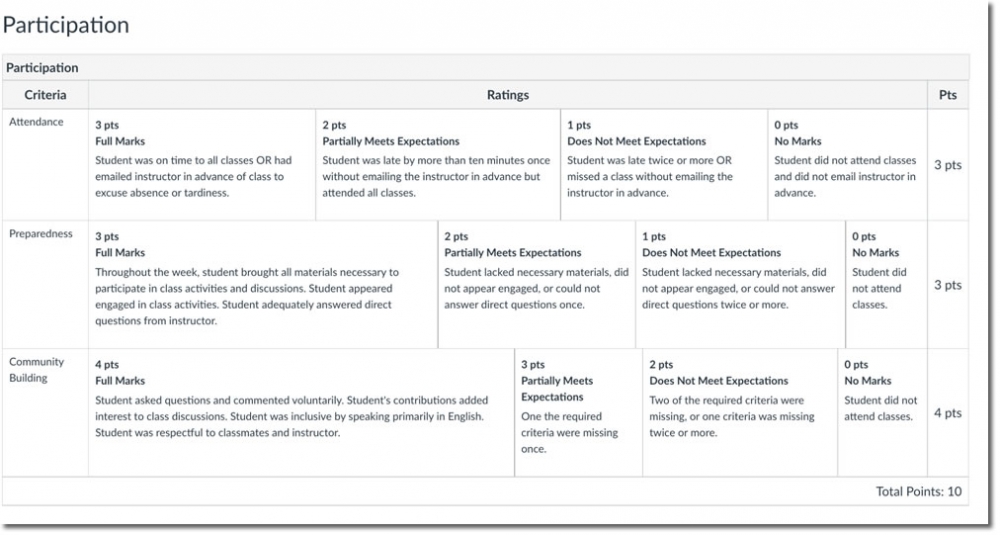8 Tips for Refreshing Assignment Guidelines
by Ilka Kostka and Cristine McMartin-Miller

An important part of preparing for the upcoming school year
is developing assignment guidelines and accompanying rubrics. Though busy
teachers often reuse materials, looking at assignment guidelines with fresh eyes
is an excellent way to ensure that they are up-to-date and ready for students.
In this article, we invite teachers to examine their assignment descriptions
and consider the following eight elements when designing and reviewing
assignments. Though we wrote these tips with higher education courses in mind,
most of them easily apply to other levels and contexts as well.
1. Connect the Assignment to the Goals of the Course
Ensure that all assignments, ranging from low-stakes
homework to major course assignments, connect to the major goals of the course.
This element is particularly important for not assigning “busy work” that
serves little purpose and takes students’ time away from meaningful tasks. Each
assignment should also include learning objectives that are precise,
measurable, and focused on what students can do (Richards, 2017).
The following example shows objectives that were
revised to be more measurable and relevant to the overarching goal of an
English language course for international students. One of the course goals
stated in the syllabus is to strengthen students’ spoken intelligibility and
listening comprehension skills in preparation for the academic listening and
speaking tasks students will engage in during graduate school.
Original assignment
objectives: After completing this assignment, you should be able
to improve your knowledge of English consonants.
Revised objectives:
After completing this assignment, you should be able to:
- Produce all 24 English consonant sounds
accurately.
- Distinguish among consonant sounds you hear in
an authentic academic lecture.
2. Foster Transparency
The Transparency in Learning and Teaching (TILT)
Project states that “transparent teaching methods help students understand how and why they are learning course content in particular
ways” (n.d.). By focusing on the purposes, tasks, and criteria for their
academic work, students can better understand the reasons they are completing
an assignment and how the assignment will improve their learning. For example,
in the guidelines for a survey report assigned in one of our graduate-level
writing courses, we included the following:
This assignment will familiarize you with the type
of research and writing you might do as part of a quantitative or mixed methods
research paper in graduate school. You will gain additional knowledge of your
topic, as well as practice email etiquette, writing logical survey questions,
creating an online survey, and summarizing results clearly and
concisely.
3. Ensure That language Is Consistent and Accessible
An assignment can be effectively designed, but if
students struggle to understand what they need to do, they can quickly become
frustrated. Using the same language across assignments is one way to help
students become familiar with our expectations. For instance, in all
assignments in our writing courses, we consistently use the term “organization”
to refer to paragraph formation, coherence, and unity among ideas throughout
the paper. Using another word in a different assignment to refer to the same
concept (e.g., “essay structure”) may be confusing. You should therefore check that
you are using consistent language and may even consider putting the criteria in
the same order across all rubrics. Likewise, avoid using jargon or
unnecessarily complex vocabulary when writing assignment guidelines.
4. Address Expectations for Academic Integrity in Each
Assignment
Explanations of academic integrity policies are
typically included in course syllabi. However, you should also include policies
for using outside sources in each particular assignment as these policies may
vary among individual tasks. For instance, students should know if they need to
cite images on slides or to what extent they can collaborate with others. If
matched text detection software is used in a writing class, be clear about its
purpose and whether students can see their originality reports before the due
date. Students should also know how to access these reports and whether their
papers will be stored in an online repository. Also make students aware of any
penalties for academic integrity violations. Figure 1 includes an example of
information about incorporating images appropriately on slides for an oral
presentation, as posted in Canvas.

Figure 1. Excerpt of academic integrity guidelines
for an oral presentation.
5. Make Submission Information Explicit
Submission information may seem obvious to
teachers, but students may not know basic information if it is not stated
clearly, such as
- how and where to submit an assignment, especially
in online courses or distance learning;
- formatting instructions, such as using Times New
Roman or Arial fonts; and
- citations guidelines (a link to a trusted
resource, e.g., APA
Style, within the instructions of each assignment is often welcome).
When reusing an assignment from a previous class,
ensure that all due dates have been updated. The assignment instructions should
also include reminders about late work and zero submissions (e.g., whether
points will be deducted from a student’s grade). Finally, some instructors find
that requiring specific naming conventions for files—for example, “Last Name,
First Name_Assignment Name_Month_Day”—reduces confusion and the possibility of
students submitting the wrong item.
6. Include Information About Assessment
Assessment is a critical component of any
assignment, as we need to measure whether students have met the assignment’s
objectives and can demonstrate learning. In our English language programs, we
typically give students a variety of formative and summative assessments, such
as writing assignments, discussion board posts, exit slips, quizzes, and oral
presentations. We develop and make rubrics available to students in our
learning management system well in advance so that they know exactly which
criteria will be used to assess them.
Figure 2, for instance, is a participation rubric
we introduce and explain during the first week of classes, a week before we use
it to assess students.

Figure 2. Sample participation rubric. (Click here to enlarge)
7. Provide Resources for Support
Teachers typically include information about
student support resources in their syllabi, such as how to access peer tutoring
services or the campus disability resource center. However, it is worth
including information about specific resources for each assignment in the
assignment guidelines, as well. For instance, the contact information for a
writing center may not help students who are working on an oral presentation
but would be useful reminder within the guidelines for a paper. Making connections
to course materials (e.g., a specific chapter in a textbook or particular
readings) can also help students complete a particular assignment.
8. Keep a Running List of Revisions for Future Classes
We suggest keeping an ongoing list of any changes
made to assignments while a class progresses and everything is fresh in mind.
If there are multiple teachers of the same course, a shared document (e.g., a
Google Doc) can be used to facilitate communication. Within the document,
teachers can add any feedback they receive from students about assignments,
including through informal check-ins and teaching evaluations at the end of the
term, as well as their own thoughts about an assignment. In this way, updating
assignment guidelines and rubrics is a simpler and more straightforward process
that does not rely as much on memory after a course has finished.
Conclusion
Strategically refining assignment descriptions is
one critical way to foster a productive learning experience and contribute to
students’ success. As we hope we’ve shown, reflecting on assignment guidelines
using the eight elements we described can ensure that they are relevant to the
course and accessible to students.
References
Richards, J. C. (2017). Curriculum
development in language teaching. Cambridge University
Press.
Transparency in Learning and Teaching.
(n.d.). Transparent methods. https://tilthighered.com/transparency
Ilka
Kostka is an associate teaching professor
at Northeastern University in Boston, Massachusetts, USA. She teaches and
oversees English language courses to undergraduate and graduate international
students in the NU Immerse and Global Pathways programs, respectively.
Cristine
McMartin-Miller is a teaching professor at
Northeastern University in Boston, Massachusetts, USA. There, she teaches and
coordinates courses for undergraduate and graduate international students and
serves as the program coordinator of the International Tutoring
Center.